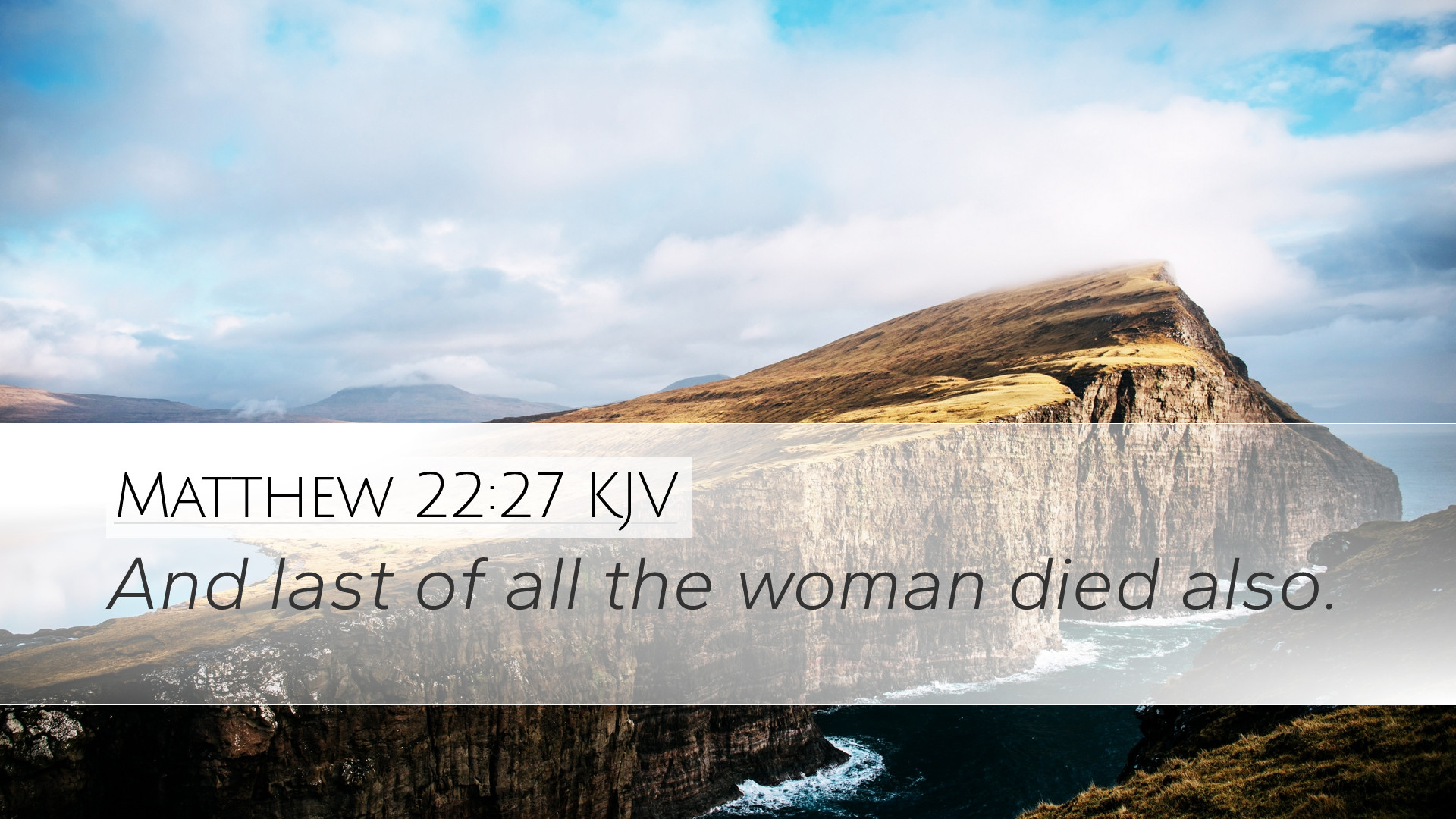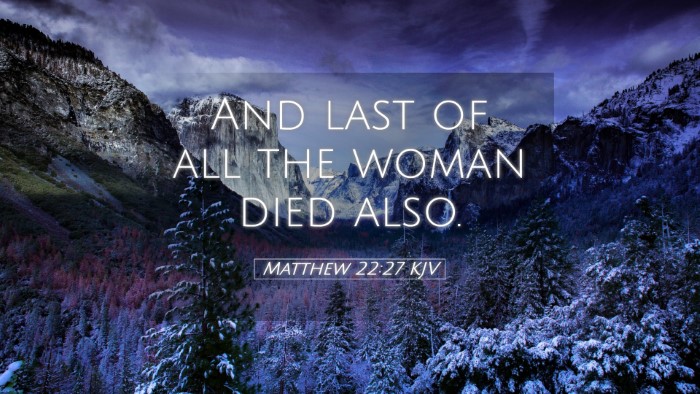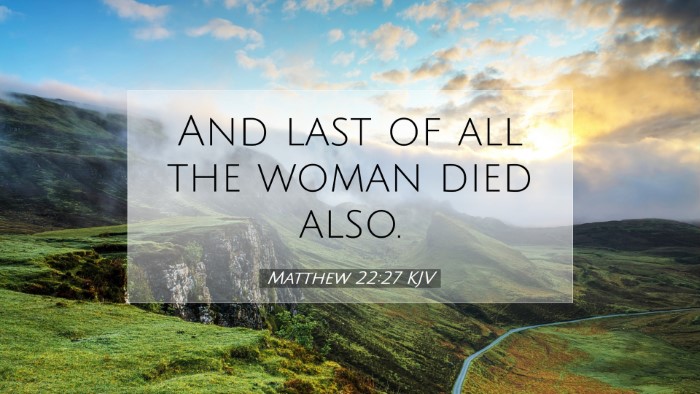Commentary on Matthew 22:27
Matthew 22:27 reads: "And last of all the woman died also." This verse comes from a narrative where the Sadducees pose a question to Jesus about the resurrection and leverage the Law of Moses concerning levirate marriage to challenge the notion of life after death.
Contextual Overview
The chapter begins with Jesus' parable of the wedding feast, illustrating the rejection of God's invitation by the Jewish leaders. The Sadducees, though a minority in Jewish society, wield considerable religious influence. They do not believe in the resurrection and come forward to interrogate Jesus, hoping to entrap Him in theological debate.
Analysis of the Verse
In this specific instance, the Sadducees reference the practice of levirate marriage from Deuteronomy 25:5, which states that if a man dies without children, his brother is to marry his widow to preserve the family lineage. In their hypothetical scenario, a woman marries seven brothers in succession, all of whom die, and they query whose wife she will be in the resurrection.
Insights from Public Domain Commentaries
Matthew Henry's Commentary
Matthew Henry comments on the absurdity of the Sadducees' question, noting that they are attempting to challenge the doctrine of the resurrection based on human reasoning and the limitations of earthly relationships. He states, "They suppose that the resurrection will be governed by the same laws as life, and thus they miss the true nature of eternal life." Henry emphasizes that in the resurrection, earthly ties and familial structures will be transcended, and believers will exist in a state of perfection and contentment without reference to earthbound relationships.
Albert Barnes' Notes on the Bible
Albert Barnes elucidates that the Sadducees' question reflects a misunderstanding of both the resurrection and the concept of spiritual realities. He asserts, "They fail to comprehend that in the resurrection, the saints will be like the angels and will have a different existence." Barnes discusses how Jesus later clarifies this point by stating that in the resurrection, the nature of human relationships changes fundamentally; thus, social status and ties do not apply to the heavenly realm. He notes, "Marriage is a Divine ordinance for the present life, and it has no part in the resurrection state where the redeemed are made like angels." This perspective invites reflection on the transformative nature of eternal life and the altered dynamics of relationships in God’s kingdom.
Adam Clarke's Commentary
Adam Clarke approaches the text by elaborating on the legal and cultural customs of the time, drawing attention to the practicality of the Sadducees' argument. Clarke discusses how the practice of levirate marriage was prevalent and highlights it as an established Jewish custom. However, he notes the limitations of their reasoning, stating, "They constructed their hypothetical scenario based on human logic, which cannot encompass the infinite wisdom of God." He explains how Jesus' teaching refutes their focus on earthly situations by redirecting attention to the divine nature of resurrection, emphasizing the divine authority over life and death, and the eternal state of believers in Christ.
Theological Implications
This verse and its context bring to light various theological implications regarding resurrection and eternal life:
- Transformation of Existence: The resurrection of the dead heralds a complete transformation of existence as believers enter a realm where earthly constraints no longer apply.
- Nature of Relationships: The lack of marriage in the resurrection underscores the notion that earthly relationships, though significant, are temporal and will be replaced by a perfect unity in Christ.
- Understanding Resurrection: The Sadducees illustrate a misconception: that resurrection should mirror earthly life. Jesus counters that divine realities surpass human understanding.
Practical Applications for Believers
For pastors, students, and theologians, the message entwined in Matthew 22:27 and its associated commentary calls for practical applications in ministry and personal faith:
- Encouragement for the Bereaved: This passage can provide comfort to those mourning loss, affirming the promise of eternal life and transformation in Christ.
- Teaching on Resurrection: Ministers can use this text to educate congregations about the nature of resurrection in Christian doctrine, expounding upon its significance.
- Challenge Worldly Thinking: The dialogue represents a challenge against secular views on life after death; believers are called to embrace the truth of Scripture despite societal skepticism.
Conclusion
Matthew 22:27 serves as a profound reminder of the transformative work of God in the life to come. It calls believers to reflect on the nature of divine realities and encourages them to live with eternal perspectives. As they navigate life’s complexities, understanding the depth of the resurrection provides hope and shapes their commitments to God and one another.


